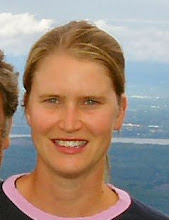The weather appears to form a pattern. Reviewing last year’s newsletter by Jody was titled; ”Gone to Hail”. The hail hit again, except this time it spared Roxbury Farm. Little Seed Gardens, Golden Harvest, and Yonder Farm (only a few miles north of us) were hit hard, losing a majority of their crops. Yonder Farms supplies the farm with fruit and this is the fourth year that they will apply for crop insurance for their apples. There is a bittersweet side to this as one consequence is a drastic reduction of their spraying regime. Damage from hail is mostly cosmetic but the global market excludes any fruit that shows a blemish. For four years we have been able to purchase “low spray” fruit not by design but by default.
The sudden wet weather has changed everything on the farm. While only a few weeks ago we were occupied with irrigation and haymaking; now we deal with muddy harvest conditions, and the challenge of staying on schedule with the succession plantings. Each vegetable is seeded in successions to ensure a steady supply and optimum quality. Some folks believe that having a CSA is less demanding as it reduces the risk to the farmer. I don’t agree; we feel a tremendous pressure to ensure that every week we have a great share to deliver. Once we have the down payment in our hands we have made a promise to you. If your main outlet is a farmers’ market and you lose a lettuce planting or two, you miss a few sales. But as a CSA you can’t afford to miss any succession or experience any crop failures because your members put their trust in you.
We all understand that the members share in the risk of any possible catastrophe like hail, flooding, or windstorm. But notwithstanding those acts of God, farmers have a lot of influence in the outcome of a crop. Most crop failures on farms are still human failures. Sometimes it is a matter of poor planning; planting parsnips in a weedy field whereby the weeds become twice as tall as the seeded down parsnips, or planting a crop like broccoli that requires a lot of nitrogen in a low fertility field. The other most common mistake was pointed out to me many years ago by my friend and colleague, John Peterson of Angelic Organics.
The irony of it all is that I was confronted by John during a session I taught to other CSA farmers about equipment. I explained to the group the methodology of properly sizing your equipment to the scale of your operation. This can be a relatively academic exercise. John became very agitated with the exercise and at the peak of his frustration screamed out: “This is wrong, you need to take these numbers and multiply them by at least two”. “But John, not too many people can afford that” I replied. “It is more expensive to undersize your equipment” was his final word on it as he continued to sulk during the remainder of my presentation. While John has a real love relationship with his farm equipment (read: Farmer John on: “Glitter and Grease”) he is also rational and in retrospect I had to admit he was correct. The crop losses that were due to equipment breakdown or inability to get the work done during small windows of opportunity changed my perspective. Collecting the many pieces of highly specialized equipment (you won’t find many pieces of our equipment on the local equipment dealer’s lot) took many years and a lot of research to collect. When John visited Roxbury Farm last year I accomplished something I never dreamt would happen; he not only approved our choice of equipment, he was almost envious.
Last week was one of those weeks where this foresight paid off. We only had one day to put all our plants and seed for the week in the ground and to plow up ground for future succession plantings. Unfortunately that day was on a Wednesday; our busiest harvest day of the week. That day showed us that people are still the most important resource as the majority of the harvesting (even on a large scale) is done by hand. Our crew of nine, with exceptional focus harvested and washed 400 bunches each of turnips, radishes, broccoli rabe, and scallions, 400 lbs each of salad mix and braising mix, 400 heads each of lettuce and bok choi, 2400 scapes, several boxes each of cilantro, parsley and sorrel, and they were able to harvest the daily picking of summer squash and zucchini. In addition to that, we were able to mulch about two acres of plasti-culture, stale seed bed 2 acres of raised beds, plant 6000 sweet corn plants, 3000 broccoli plants, 3000 Brussels sprouts plants, seed down 7000 row foot each of salad and braising mix, cultivate two acres of potatoes, four acres of sweet corn, and work up about four acres of new vegetable land. Yes, it was kind of late when we were done that day but when it poured buckets of rain again the following morning we knew none of our efforts had been in vain.
The common mistake most CSA farmers make is that they penny-pinch when purchasing equipment. While equipment is very costly, a breakdown can be far costlier as a farmer potentially loses the opportunity to get his crops in the ground. What I learned from Farmer John is that it is better to oversize your equipment as it allows you to take advantage of small windows of opportunity. One of those small windows was last Wednesday. With John Middleton keeping the equipment in tip top shape, with a harvest crew moving in high gear, and the foresight that you can hardly have too many pieces of equipment around, we have a little more peace of mind. That, and headlights on the tractors. ~Jean-Paul
Subscribe to:
Post Comments (Atom)




No comments:
Post a Comment